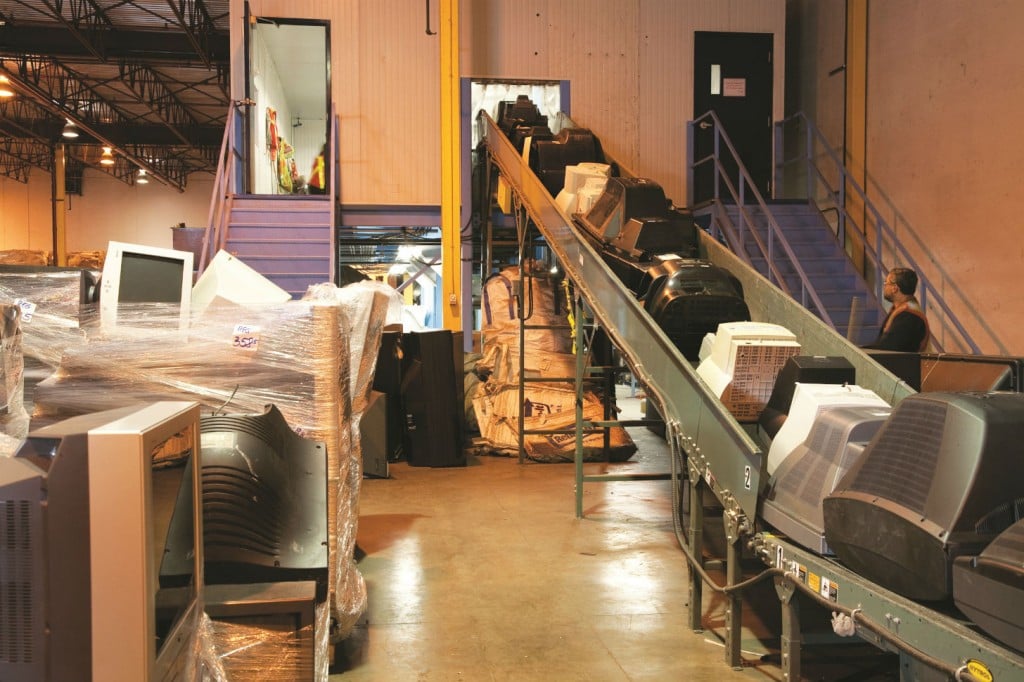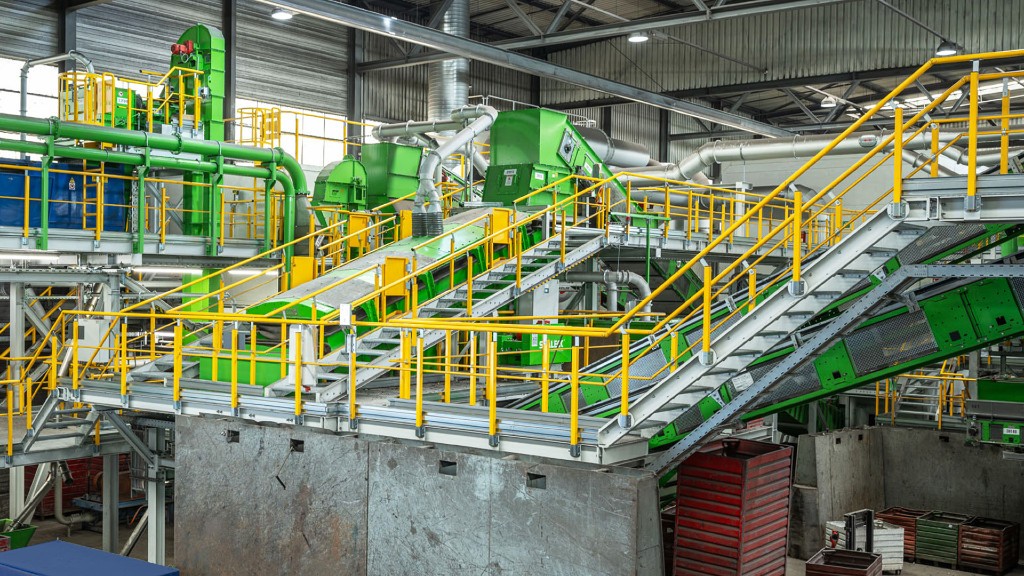Making an impact with electronics recycling
An update on the current state of Canadian e-waste recycling

In recent research conducted across Canada, an average of 65 percent of Canadian households polled indicated that they have at least one obsolete, broken, or unused electronic at home. That’s potentially over 23 million electronic devices waiting to be recycled.
Fortunately, most electronics today are “designed for the environment” – by getting smaller, lighter and more efficient. Take television sets as an example: two decades ago, most households were upgrading from their old picture-tube TVs – often weighing over 100 pounds – to flat panel TVs. Not only are flat panels thinner and lighter, they have a reduced environmental footprint overall, using fewer materials to make and saving energy in use. However, we still must think ahead to where new electronics, and the electronics that they have replaced, will end up when they are at the end of their useful life. If electronics are still in good working order, consideration should first be given to reuse, through donation to family members, friends, local charities or to a reputable reuse organization.
Canadian provinces leading the way
The current market transformation in e-waste and the desire from consumers to have the latest in technology is part of what continues to drive the Electronic Products Recycling Association (EPRA). The EPRA is an industry-led not-for-profit organization, based out of Ontario, tasked with promoting and managing the recycling of end-of-life electronics (EOLE) across Canada.
In 2015, EPRA and its eight provincial programs collected and safely and securely recycled over 120,000 metric tonnes of EOLE, diverting over 18 million devices from landfills. In fact, since the first programs began e-recycling in 2007, EPRA has recycled over 715,000 metric tonnes of EOLE across Canada. EPRA operates e-recycling programs in British Columbia, Saskatchewan, Manitoba, Ontario (Ontario Electronic Stewardship), Quebec, Nova Scotia, Prince Edward Island, Newfoundland and Labrador, and a ninth program is scheduled for launch in New Brunswick.
In the eight provinces in which EPRA operates e-recycling programs there are over 2,300 authorized drop-off locations and more are added each year. Following on the Government of New Brunswick passing regulations around the handling of e-waste in October 2015, EPRA is working with Recycle New Brunswick to launch an e-recycling program in that province. Additionally, Alberta and the Northwest Territories offer a regulated e-waste program and the Yukon has also passed e-waste regulation.
Notably, the provinces that have landfill bans on e-waste have the highest per capita e-recycling rates with Nova Scotia and British Columbia leading the way at 4.7 and 4.6 kg per capita respectively.
Based on the success of its provincial programs, Canada is definitely a North American leader in the recycling of e-waste. As demand for electronics continues to increase and industry moves towards lighter, smaller, increasingly multifunctional products, we will see increases in the number of units with a net reduction in the tonnage of devices collected annually. To that end, as we embrace this positive trend of miniaturization, the industry will need to adjust. For example, it will need to move from strictly weight based metrics for tracking e-recycling program success to other, more meaningful indicators, including the level of public awareness and program access and convenience.
The road ahead
When electronics are recycled there is a two-fold benefit; waste electronics are kept out of landfills and the environment and precious metals and elements are recovered and reused to create new products. This recycling of recovered materials from old devices reduces the need to use traditional mining to extract minerals from the earth, resulting in less energy used to produce new products.
EPRA’s mandate continues to be to drive consumer education and awareness of electronics recycling, in addition to collecting and recycling all EOLE that is dropped off at EPRA authorized depots. This includes older, obsolete products, which for the most part, are the most expensive and complicated to recycle.
When EOLE is dropped off at an EPRA depot (for no charge), it is transported to an audited and approved recycler for processing to ensure that it is recycled in a safe, secure and environmentally sound manner – and that it is not illegally exported.
In today’s electronics sector, consumers with heightened environmental awareness and manufacturers that drive environmental electronic product design are helping to “pay it forward” by making changes for the better in EOLE management. Many electronic products will continue to evolve to be more efficiently designed for their end of life, and maybe, one day, all electronics will be fully, 100 percent reusable and recyclable. Consumers, for their part, simply need to continue to take action in greater numbers, to bring EOLE to authorized depots for responsible recycling.
Christy Teasdale is National Director, Electronic Products Recycling Association.
This article first appeared in the September, 2016 edition of Recycling Product News, Volume 24, Number 8.


